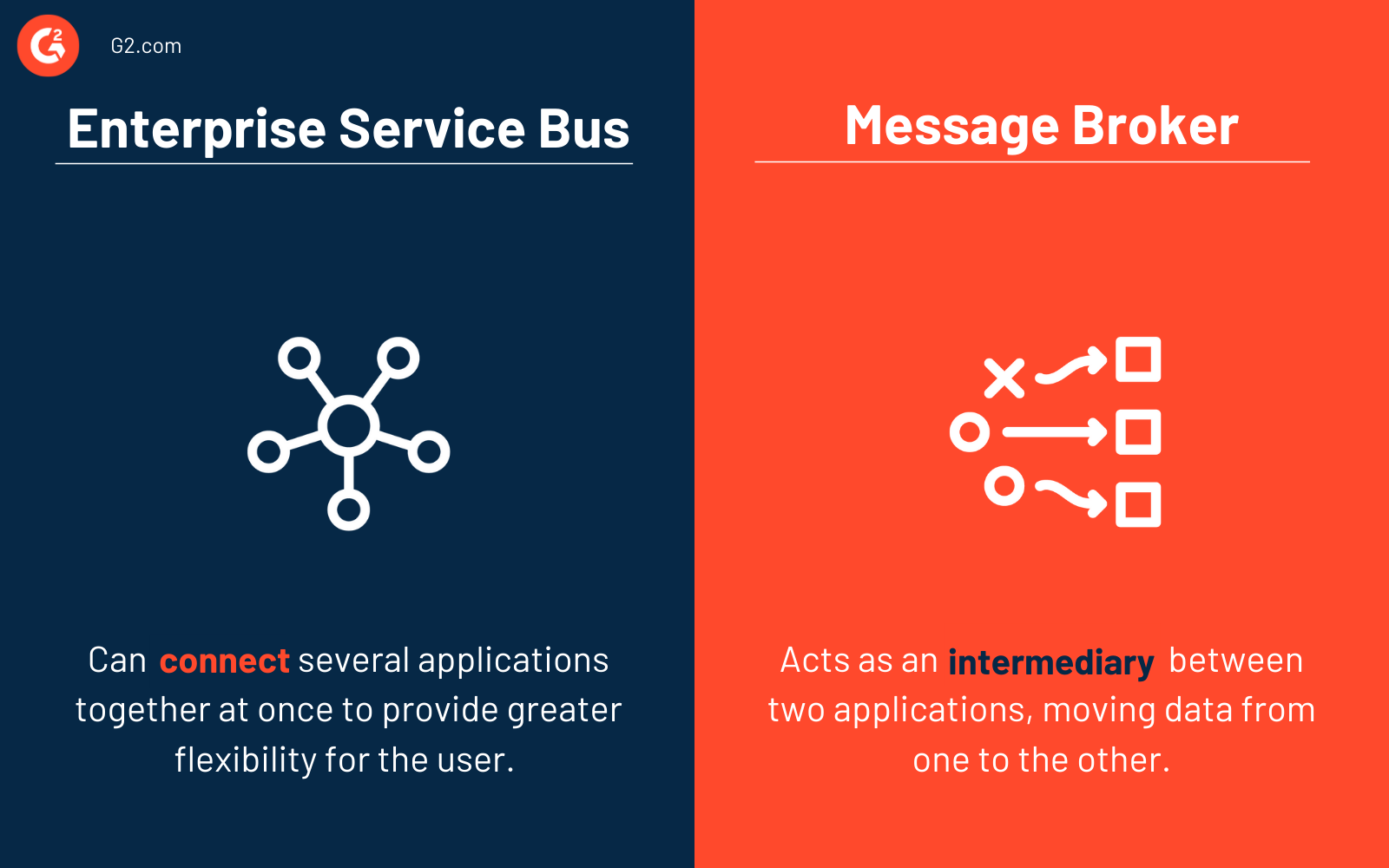What is an enterprise service bus?
An enterprise service bus, or ESB, is a type of software architecture with rules and pathways by which various applications connect to each other and share data.
The ESB is the pattern built around a centralized software platform in order to integrate data between applications that wouldn’t ordinarily connect. Messages can be routed through the ESB, while also transforming data and converting protocol to make it compatible with the other connected software.
Both large and small organizations use specialized ESB software to seamlessly connect their applications in a more efficient way than traditional point-to-point integration systems.
Basic elements of an enterprise service bus
All ESBs work on the principle of service-oriented architecture (SOA) whereby multiple services communicate across different platforms. That’s why every ESB must have:
- Endpoints. Both entry and exit points within the ESB architecture are considered endpoints. These will have a unique address or identification code to help users determine which endpoint is in operation with each individual application or software tool in the system. Endpoints can also adapt to different input and output types, like binary data or XML. This gives the ESB flexibility to work with any application.
- Adapters. The adapter is a critical part of the ESB that translates data from one application type to another. This means that any data the output application receives can be used error-free.
- Bus. The bus is where the core components of the ESB architecture are established, such as the rules and policies for message exchange between the endpoints. Different communication languages can be programmed in the bus to direct data through endpoints that work best with their connected applications, making data accessible to the receiving programs.
Benefits of an enterprise service bus
An ESB gives businesses an opportunity to simplify communication and messaging within the systems already being used in the organization. Some of the benefits of using an ESB include:
- Improved integration between software. Since an ESB is a centralized platform, businesses can more easily integrate the various tools and applications they use. No matter what language or protocol an application uses, the ESB can transform and translate the data to make it readable. This gives organizations more flexibility to scale while managing their existing tools.
- Increased efficiency. When a pre-built ESB is in operation, developers can build new applications faster and more effectively thanks to the information sharing capabilities of the ESB. This saves businesses time and money when developing new operational tools.
- Greater visibility across applications. Managing data across numerous applications can be challenging, especially in large organizations. ESBs make this easier, while also giving businesses more visibility if issues arise at any point in their application system.
Best practices for an enterprise service bus
Businesses have their pick of ESB tools to choose from. Companies should look for an ESB solution that is:
- Lightweight. The ESB should be a lightweight tool that doesn’t add additional strain on the overall system, particularly if many applications are being connected together.
- Scalable. As a company grows, its needs change and operations have to be scaled to account for increased workflows. ESBs should also be scalable to support the developing needs of the company and any new platforms added to the system.
- Accessible. Developers may be more familiar with a handful of programming protocols and languages than others. An ESB should be adaptable to fit around the custom code that the developers write. The tool also needs the ability to translate the custom code into other languages to make it compatible with applications on the network.
- Cloud-compatible. For many businesses, hosting information in the cloud makes their day-to-day operations more straightforward and accessible no matter where teams are. Having a cloud-supported ESB means that organizations can connect and deploy different applications from anywhere more easily.
Enterprise service bus vs. message brokers
It’s common to confuse ESBs with message brokers, but differences exist.

ESBs are generally used to connect several applications together at once. The information can travel from multiple applications to multiple applications at the same time. This offers greater flexibility for the user.
Message brokers are simpler to use and implement, but don’t allow for as many applications to be connected at the same time. In most cases, a message broker is the intermediary between two applications, moving data from one to the other.
Boost your in-house DevOps with more efficient software development tools like application release orchestration (ARO) software.

Holly Landis
Holly Landis is a freelance writer for G2. She also specializes in being a digital marketing consultant, focusing in on-page SEO, copy, and content writing. She works with SMEs and creative businesses that want to be more intentional with their digital strategies and grow organically on channels they own. As a Brit now living in the USA, you'll usually find her drinking copious amounts of tea in her cherished Anne Boleyn mug while watching endless reruns of Parks and Rec.

